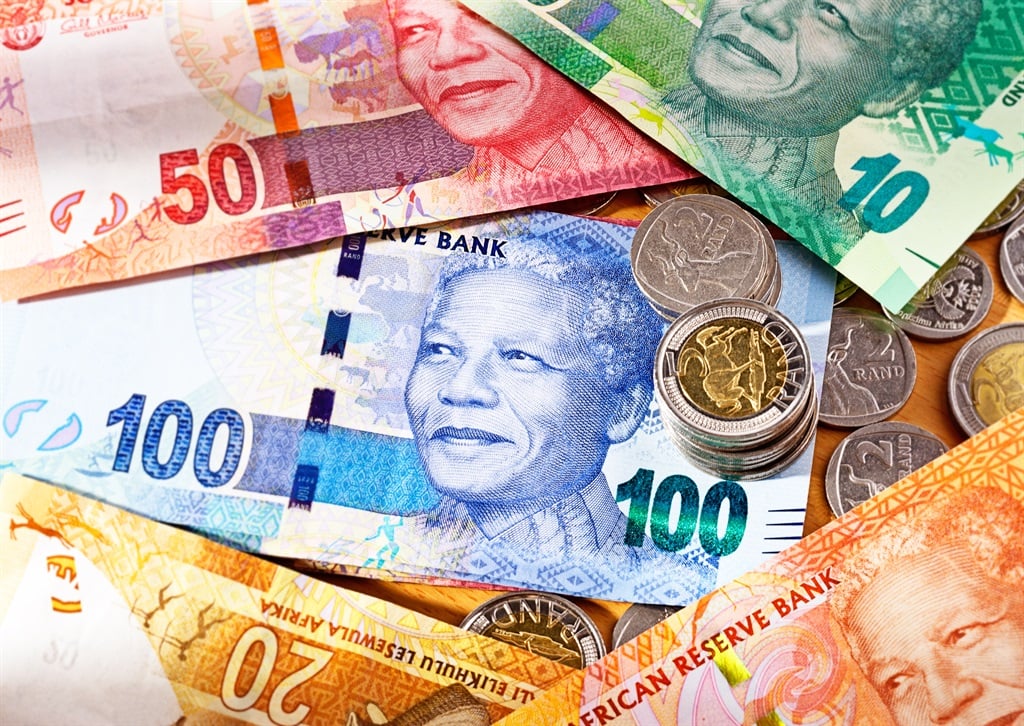- The rand rallied to R18.77/$ after Finance Minister Enoch Godongwana said he would tap the Gold and Foreign Exchange Contingency Reserve Account (GFECRA) to reduce government debt over the next three fiscal years.
- The minister also announced no new major taxes on already struggling consumers which analysts say the market views as a positive given the shaky domestic economic outlook.
- The budget deficit is forecast at 4.5% of GDP in 2024/25 before easing to 3.3% by 2026/27.
- For more financial news, go to the News24 Business front page.
The rand, which had been trading weaker than R19/$ just yesterday, rallied as news broke that Finance Minister Enoch Godongwana planned to reduce the worst government debt burden since 1947.
The currency rallied to as strong as R18.77/$ after Godongwana said he would tap the nation’s Gold and Foreign Exchange Contingency Reserve Account (GFECRA), which houses accounting profits on South Africa’s foreign exchange reserves, to reduce government debt over the next three fiscal years. The rand later pared gains to trade at about R18.82 at 15:33 local time.
Government will now allocate R150 billion from GFECRA, which has swelled from R1.8 billion in 2006 to more than R507 billion, thanks to a weaker rand boosting the local value of government’s foreign currency holdings, to lower its debt load. South Africa’s current gross loan debt as a percentage of GDP (around 74%) is the highest since 1947 and one out every five rands earned from tax is now spent on debt payments.
“The appreciation of the rand into the budget speech highlights some approval of proposals towards fiscal responsibility and environmental stewardship for 2024/25,” said Shaun Murison, a senior market analyst at global trading platform, IG.
Murison added that the market was likely also relieved that Godongwana hadn’t burdened South African consumers any further with major tax increases, given the already weak domestic economic climate.
Godongwana’s use of the GFECRA will see government receive distributions of R100 billion in 2024/25; R25 billion in 2025/26; and R25 billion in 2026/27, which will help reduce its reliance on the domestic bond market to fund spending. Government’s gross loan debt is also forecast to stabilise at around 75% of GDP next year.
“The biggest story out of the budget is the R150 billion withdrawal from the GFECRA to reduce South Africa’s debt service costs through a reduction in borrowing,” said Angelika Goliger, EY Africa chief economist. “Reducing South Africa’s debt, and structurally shifting spending from consumption towards investment, will improve the ability of the fiscus to support economic growth.”
Goliger added that Godongwana’s budget had succeeded in maintaining fiscal responsibility, while simultaneously being “kind” to South Africans facing challenging economic times, given that no major tax increases were announced.
Treasury estimates that the consolidated budget deficit for the 2023/24 fiscal year will be 4.9% of GDP, unchanged from its forecasts outlined in the 2023 medium-term budget policy statement (MTBPS). The budget deficit is also forecast to narrow slightly to 4.5% of GDP in 2024/25, before easing further to 3.3% by 2026/27.
“The projected narrowing of the consolidated budget deficit … further demonstrates a concerted effort towards fiscal consolidation,” said Andrew Bahlmann, chief executive for corporate and advisory at Deal Leaders International. “This may be viewed favourably by investors as it reduces the risk of fiscal imbalances that could lead to macroeconomic instability.”
Treasury said it expects South Africa’s economy to have expanded by 0.6% 2023, with forecasts for 2024 revised upward to 1.6%, from 1.0% in the MTBPS. The Treasury anticipates this improved outlook due to be driven by increases in consumer spending as inflation eases, and increased investment in energy infrastructure.
“The Treasury’s view is relatively more optimistic compared to other forecasters, including the SARB, which projects growth of 1.2% in 2024,” said Goliger. “There are risks to the downside arising from geopolitical tensions, weaker growth globally and challenges in South Africa’s electricity and transport infrastructure.”
